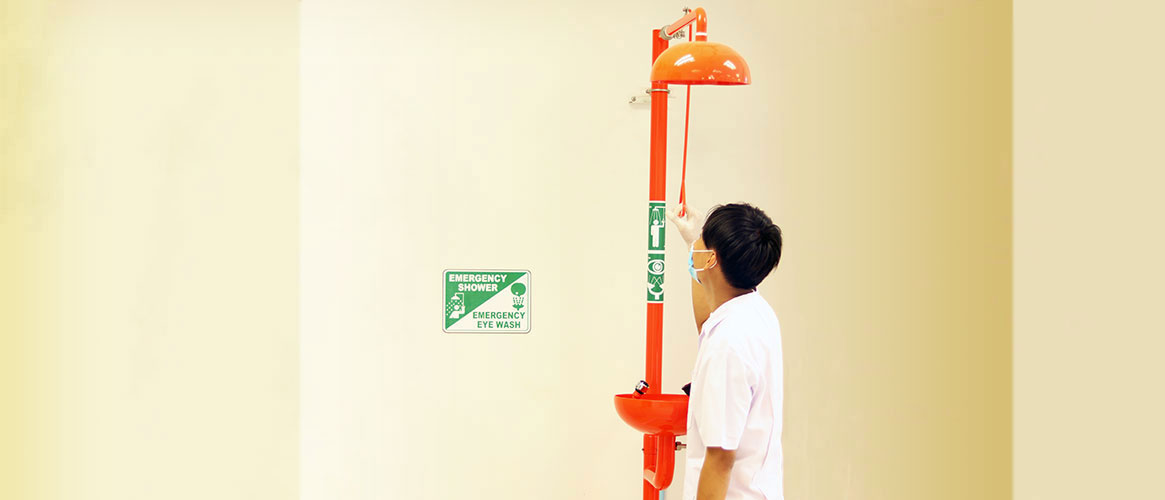If your employees work with chemicals, dusts, or corrosives, they’re at risk of accidental eye and skin injuries. Cal/OSHA requires emergency eyewash and shower equipment in all work areas an employee may come in contact with chemicals or other substances that can cause corrosion, severe irritation, or permanent tissue damage. Emergency eyewash stations flush chemicals out of the eyes. An emergency shower is used to wash off the chemicals that come in contact with the skin.
Location and access – In less than 10 seconds, take an injured worker to an eyewash or safety shower.
Water quality and pressure – Water must be potable, tepid (not too hot or cold), and delivered at a pressure that will not damage the eyes (less than 80 pounds per square inch [PSI]).
Operation – The unit must turn on within one second and remain on without using one's hands.
Flow rates – Cal/OSHA requires employers follow the ANSI standard that emergency eyewashes deliver 0.4 gallons of water per minute for at least 15 minutes. Emergency showers must deliver at least 20 gallons per minute for 15 minutes.
Maintenance – Self-contained units must be maintained according to the manufacturer's instructions, including replacing flushing fluids or shower water.
Flushing and testing – Plumbed eyewash and shower units must be activated at least monthly to flush the line and verify the function. Annual flow rate testing is required, for example, your eyewash should fill a 1-gallon bucket in 2.5 minutes (equal to the 0.4 gallons per minute referenced above).
Employee training – Employees must know the location of equipment and how to use it before working with substances that can injure the eyes or skin.
How do I know if I need to have an eyewash or a shower?
When using hazardous chemicals, consult the safety data sheet (SDS) for the chemical to determine if an eyewash or shower should be used. Look for statements such as, "Rinse/flush eyes, rinse mouth, rinse/flush exposed skin" and "Emergency eyewash/shower should/must be available." in Section 4 (First Aid Measures) or Section 8 (Exposure Controls/Personal Protection) of the SDS.
You can also look at the hazard codes and precautionary statements in Section 2 (Hazard Identification) of the SDS to determine if you should have an emergency eyewash or shower available.
